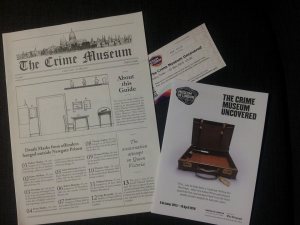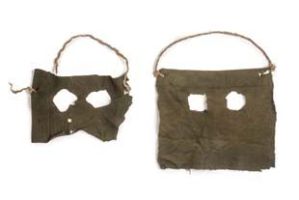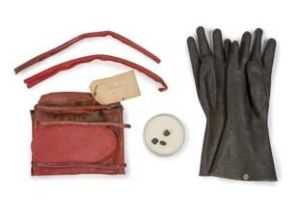Fittingly for Halloween, I decided to go and see the new exhibition The Crime Museum Uncovered at the Museum of London. The exhibition provides a fascinating look into crime, police work, and forensics in London since the establishment of the Metropolitan Police’s Crime Museum in the 1800s. This is the first time that many of these objects have been on public display, as generally the crime museum is for police officers and detectives and training, or to special visitors with permission.
I thoroughly enjoyed the exhibition, as did my partner. Not only is this because I seem to be on a kick with detective fiction lately, having just finished the third Robert Galbraith novel and watched about every detective fiction series or crime documentary on Netflix, but I think the exhibition is generally quite well done.
Right from the beginning I was hooked, as the first thing I saw were some questions outlined on the wall in the opening panel:
What does it mean to put these objects on public display? What do they tell us about the people involved? Where do you draw the line?
And the statement:
Above all else we did not want to bring further distress to the victims of crime, we therefore decided not to look in detail at any individual cases after 1975.
Immediately, this set the whole tone for the exhibition, in a good way, and I was a bit pleasantly surprised. This wasn’t just going to be about Jack the Ripper and glorifying all the most famous crimes, there was another level of meaning and sensitivity here that the curators had thought about, as the Met Police has always done by limiting public exposure. This was carried throughout the exhibition, as the focus was not just on the crime, but on the people, and notable, on forensic and detective advancements, and on cases that changed laws. The crimes are the hooks, but the artifacts add interest and humanity, and the way the crimes were solved and the results of the cases and their effects educate and inform.
The ethical questions were also directly followed through in the last room of the exhibition in a video in which several different individuals- the current crime museum curator, the museum of london curator, police officers, victim support groups individuals, etc, directly address the questions as well as others. This was a great way to end the exhibition and provoke interesting thoughts about ethics, our fascination with crime, the purpose of museums and collections, and specifically this exhibition and collection, and the possibility of a public crime museum. The answers were engaging, providing different perspectives, exploring notions of social history, training, education, discussion of violence outside the spectacle of the media. Very well done. In this room there was also several computer stations in which visitors could answer 3 different questions, and which other visitors could read, further providing thought provoking discussions.
The main body of the exhibition looked at individual cases highlighting notable crimes, as well as cases that used techniques that had never been used before, including fingerprints, ballistics analysis, various chemical tests, etc. This of course includes famous cases like Jack the Ripper and the Kray brothers, but again, the focus is on the police actions, and not the horror of the crime. There were also thematic sections on terrorism, abortion, espionage, and weapons, among others, which in some instances highlighted how these were used specifically for training- explaining that these artifacts are shown in order to help police identify what a concealed or altered weapon might look like.
The exhibit used a variety of techniques throughout which helped engage- video, audio, photographs, lighting, timelines, were all used in addition to text and objects to explore the themes of the exhibition, and were often effective.
My only complaints about the exhibition were the crowding- so many people, and so much to see! And for some individuals the amount of text might be an issue. I’m generally fine with this, but I was curious about half way through if it would have been a good idea to have an audio version of the text, so that not so many people were crowded right up against text panels and labels trying to read it all (because you truly do want to!). Note- because the exhibition is so popular, it is selling out on certain days, so do try to book in advance if you want to see it.
Overall, very interesting exhibition, which I highly recommend seeing, and which I was very glad had addressed ethical issues about display.
Thoughts? Gone to see the exhibition? What did you think?
Link to exhibit description and video, and place to buy tickets:
http://www.museumoflondon.org.uk/london-wall/whats-on/exhibitions-displays/the-crime-museum-uncovered/



